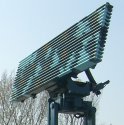I don't think it will be much larger. If you creep it up to 6000 tons then you get into Type 052D territory.
Just consider what the Russians are doing with their frigates. The newer 'Admiral Amelko' will have 24x VLS surface attack plus 32x VLS air defense with up to 400 km range air-to-air missiles and quad-pack short range air-to-air missile capability. AESA radar.
The Type 054 has 8x surface attack, 8x VLS air defense with short range missiles only (15km range) with no AESA radar.
Even if the PLAN only doubles the amount of surface attack launch cells, improves the air to air missiles, adds AESA, and makes it the same displacement as the 'Admiral Gorshkov' (4500 tons) it would represent a massive increase in capabilities. Even if it only had an air to air defense system equivalent to S-350 it would be a vast improvement.
Regarding the bolded part -- uhh, excuse me?
054A has 32 HHQ-16 VLS, where the original variant that first entered service back in the mid/late 2000s with a range of about 50km, and since then we've seen additional newer variants emerge, likely with range in excess of 70km given what we know about the improvements in range that the export LY-80 have been cited with, and we know there are at least two visually different HHQ-16 improved variants from the original type.
Also, while the Sea Eagle radar of course isn't an AESA, it is a quite capable PESA and perfectly fine for its time and still capable now although obviously far from cutting edge.
===
That said, I agree that approaching 6000 tons seems a bit much.
But I think going over 5,000 tons, approaching 5,500 tons is viable even as an evolution of the 054A hull.
The new Japanese FFM/DX30/30FFM/whatever it's called actually has a full displacement of 5,500 tons and dimensions that are actually virtually identical to 054A. Of course its hull geometry is different despite having similar overall peak dimensions to 054A.



